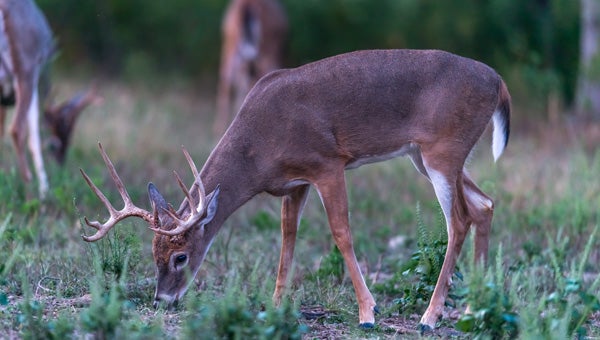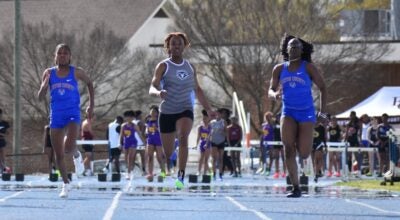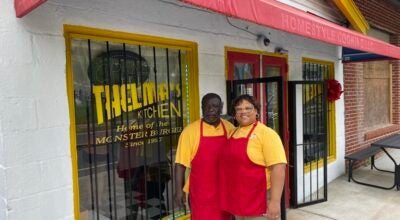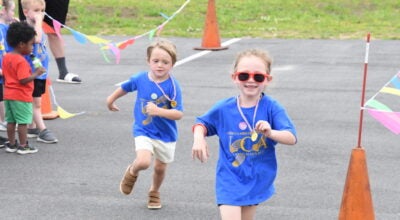Making the shot (outdoors column)
Published 10:21 am Monday, October 12, 2015

Best shot: While most hunters know the best spot to aim for, deer often aren’t walking or standing directly in front of the hunter. (Photo by Gary Mitchell)
By Gary Mitchell
As bow as well as gun hunters, we need to make the best shot we are capable of making.
On some occasions, we don’t get off the shot we planned. A deer makes a move forward the moment the trigger is pulled, and a bad shot is made. What would you do?
Let’s start by talking about shot placement. Most of us know that right behind the shoulder is where we should aim. It’s the quickest and most humane way to take a deer.
This being said, deer do not understand we are trying to take them humanely. Deer are often walking down a trail that often does not lead directly in front of you or me. This is why shot placement is so critical.
I have always used this rule of thumb: shoot for the off-side shoulder. What this means is when you aim, do so as if you are going to shoot through his body and try to hit the other shoulder.
Some may say they will not get a complete pass-through if I do this with an arrow. Maybe not, but it will ensure that you make contact with the more important vital organs, being the heart and lungs.
If you do pull off, you are still guaranteed a shot in the lungs. If you were to shoot for a pass-through and aim for the rib cage and are not on the mark, you’ll get the liver, or worse, even a gut shot.
With a shot aimed at the lungs, you are still not guaranteed a complete pass-through. That will depend on what type of broadhead you shoot and if your broadhead comes in contact with the rib cage.
This may not be as critical when gun hunting but could play a factor. With a shot placed at the opposite shoulder, this will ensure a heart shot or a least a well-placed shot to the lungs. Just always be aware of where that opposite shoulder is when you shoot, and this will give the best clue as to where to place your next shot.
What do you do if you make a bad shot? The best thing is time. If there is a possibility that the shot was bad, do not rush the deer. Give the deer time to lay down and bleed out.
Deer are animals of incredible stamina, and they will prove it to you if they are given the chance! We all want to run right out and see if we were successful in our shot. Don’t!
Time? What do you do with your time while you wait?
First things first. Find your arrow if it was a pass-through. If it was not a pass-through, then don’t go on a search and rescue mission. It may have stayed in the deer and may not fall out for a little distance.
If it was a pass-through, find the arrow and search for the first signs of blood. The place in which you found the arrow and the first sign of blood are places you will need to mark with flagging tape or even toilet tissue that you may have in your pack.
I have used toilet paper more times than I can count. I sometimes forget flagging tape, but one thing I never forget is toilet paper. Toilet paper is white, visible, and if you leave it in the woods, it’s biodegradable.
Once you have established a starting point to start your search, the next thing is to go back and recruit friends or other family members to help you search for the deer.
This will also take time in which the deer should lay down and probably expire. Getting other people to aid in your search will always increase your odds of finding your deer.
Be sure that all members helping you search have flagging tape or toilet paper to help mark the blood trail as you go. This will aid in being able to see the path in which the deer is taking and will aid in clues as to where the deer is headed.
If the trail is erratic, then he is wounded and may go down quickly.
Try and keep your tracking party spread out—no more than two people on the actual blood trail at once. This will keep the blood from getting trampled and missed, which could cause you to lose the trail and possibly lose your deer.
With people spread out, you have a better chance of someone spotting the deer sooner.
What happens if you jump the deer? At that point, immediately mark the spot and back out of the woods.
You will only lessen your chances of finding the deer if you push on. Give the deer overnight, if possible, as this will give him more time to bleed out.
If there are possibilities that the deer can’t be found and help may not be available, then there are people that can provide dogs to aid in your search.
Just remember that permission is advisable if you cross over onto someone else’s property. Permission should be asked before proceeding.
Also remember that if you call one of the dog handlers listed below, ask them what their charges are before getting them to come out. Even if they say the cost is to just help cover expenses, remember they have fed this dog all year, they have traveled to meet you and they are helping you!
There are two people that cover the Chilton County area that I currently know of. Art Powers can be reached at (334) 431-0884 (cell), and William Crawford can be reached at (205) 792-9288.
There may be more, and if so, you can call me at (205) 410-5297. If no answer, please leave a message.
Gary Mitchell is an outdoors enthusiast who spends much of his time in the woods with a camera. Visit him at GaryMitchellImages.com.







